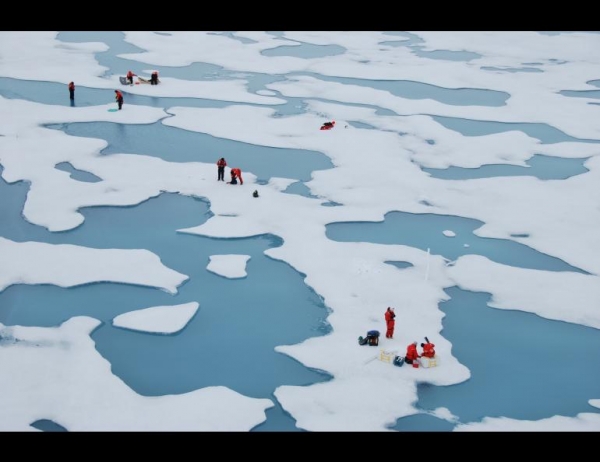A proposal to cover Arctic sea ice with layers of tiny hollow glass spheres about the thickness of one human hair would actually accelerate sea-ice loss and warm the climate rather than creating thick ice and lowering the temperature as proponents claim.
Sea ice, by reflecting the majority of the sun’s energy back to space, helps regulate ocean and air temperatures and influences ocean circulation. Its area and thickness is of critical importance to Earth’s climate.
The new finding is the result of work led by researcher Melinda Webster of the University of Alaska Fairbanks Geophysical Institute. The research was published today in the journal Earth’s Future.
The research challenges a claim in a 2018 research paper that repeated spreading of hollow glass microspheres, or HGMs, on young Arctic sea ice will increase reflectivity, protect it from the sun and therefore allow it to mature over time into highly reflective multi-year ice.
Read more at University of Alaska Fairbanks
Image: Scientists on the MOSAiC expedition work among Arctic melt ponds in 2020. (Photo Credit: Melinda Webster)


